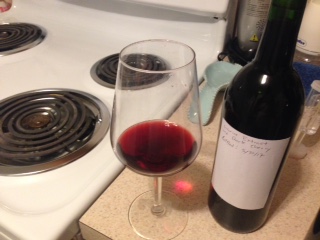OK, so I'm back a few days before my scheduled update, but I have some trememdous news - I may have uncovered the secret of making liquorice "black". I was rewatching a youtube video I'd previously saved, wherein "erk soos" is made, this being a traditional Muslim Ramadan drink that more or less translates as "liquorice juice". Syria is a huge producer of liquorice, so these people probably know what they're doing. Unfortunately, I don't speak Syrian, and the several related youtube videos are all Greek to me, but just watching I noticed how very BLACK the juice is, and how quickly and easily it osmoses into the surrounding water.
Then I realized that I had heard one word that sounded English-y, right at the point in the video where the "sugar" is added - I wondered why you'd add sugar to liquorice that is already so sweet. At first I thought the word was "sodium", but when I heard it again in another video (both linked at bottom) I decided it might be "soda", and that hunch led me to a google hunt that yielded the following tidbit:
I live in the Middle East. Here, the most common way of drinking licorice root is in the form of Erk Soos. About a cup of licorice (looks like dried grass), 1 tsp of baking soda, and a few tablespoons of water are rubbed together until everything is moist. This is put in a cloth (cheesecloth…or any other thin cloth). The cloth is tied together (to keep the contents from falling out) and submerged in a gallon of cold water and left for 8 hours or so. Remove the ‘licorice bag’ and discard. The resulting drink is called Erk Soos.
I understand what baking soda is, and how it leavens baking in combination with an acid, but I don't really know why it would make such a difference to steeping liquorice - but those videos speak for themselves. I've tried to duplicate this myself with 1 tsp liquorice
powder to 1/8 tsp baking soda, and while the resulting mix seems a bit darker than otherwise, it's nowhere near black.
So I'm putting this all here in the hopes that someone smarter than me can make sense of this clue. Any thoughts?
EDIT - links below:





